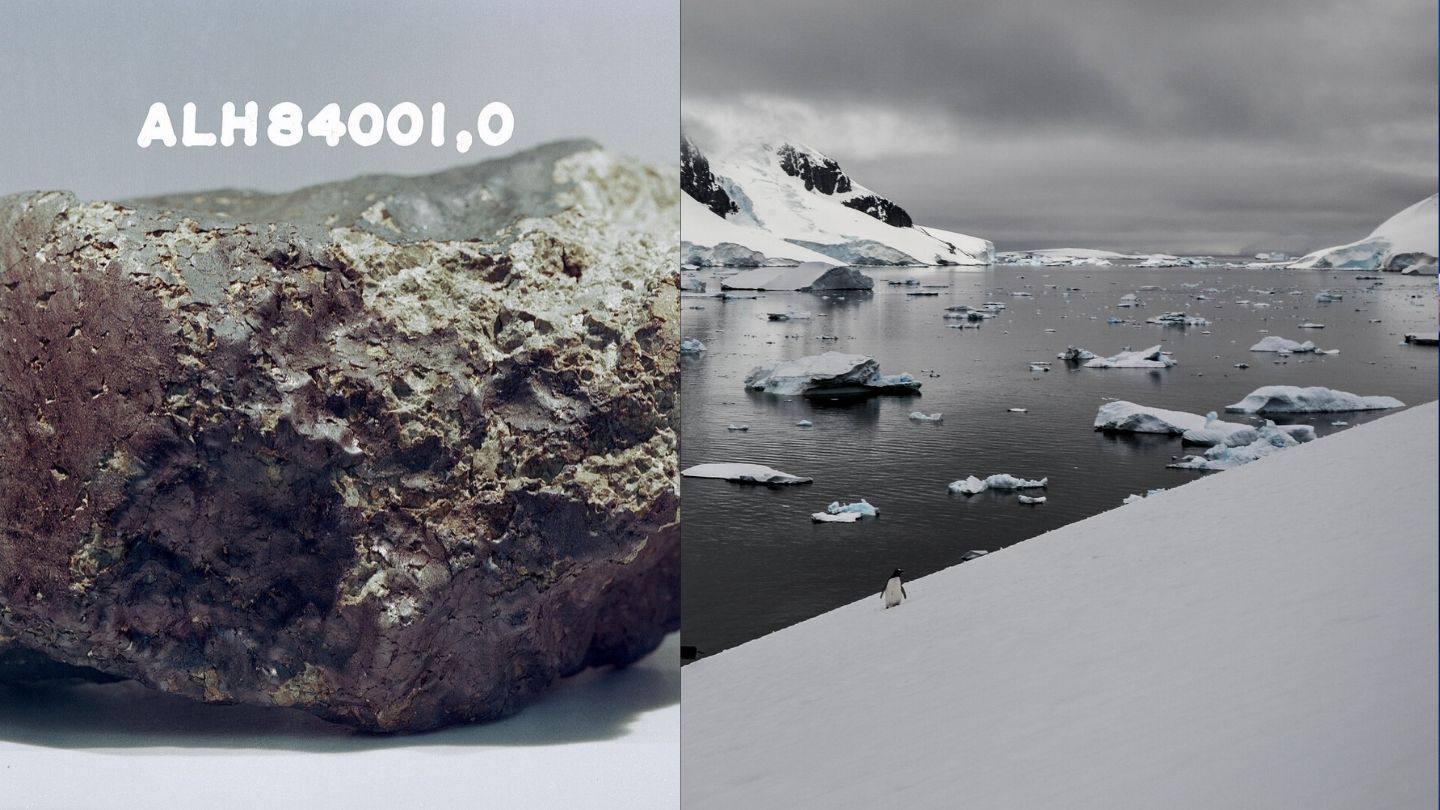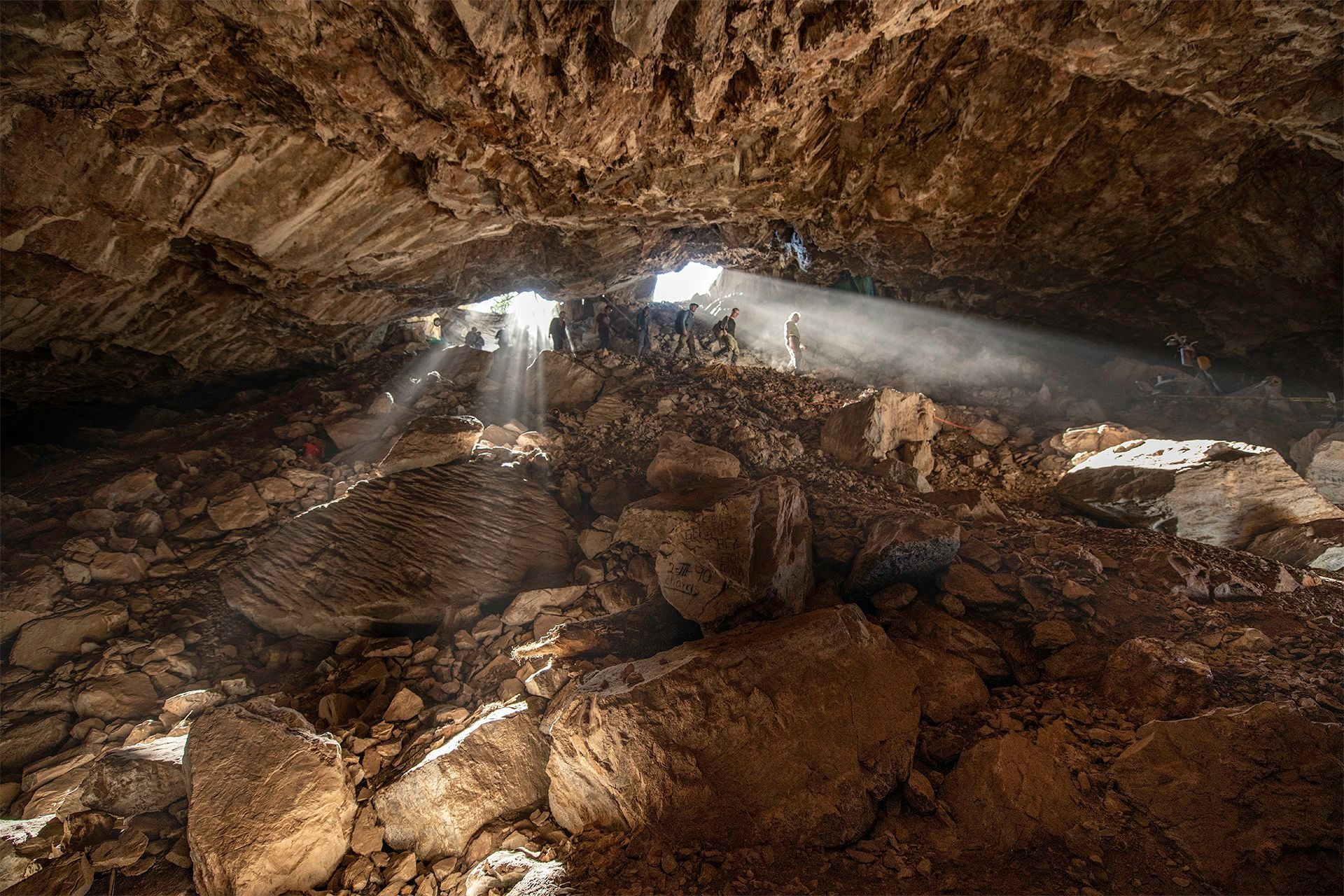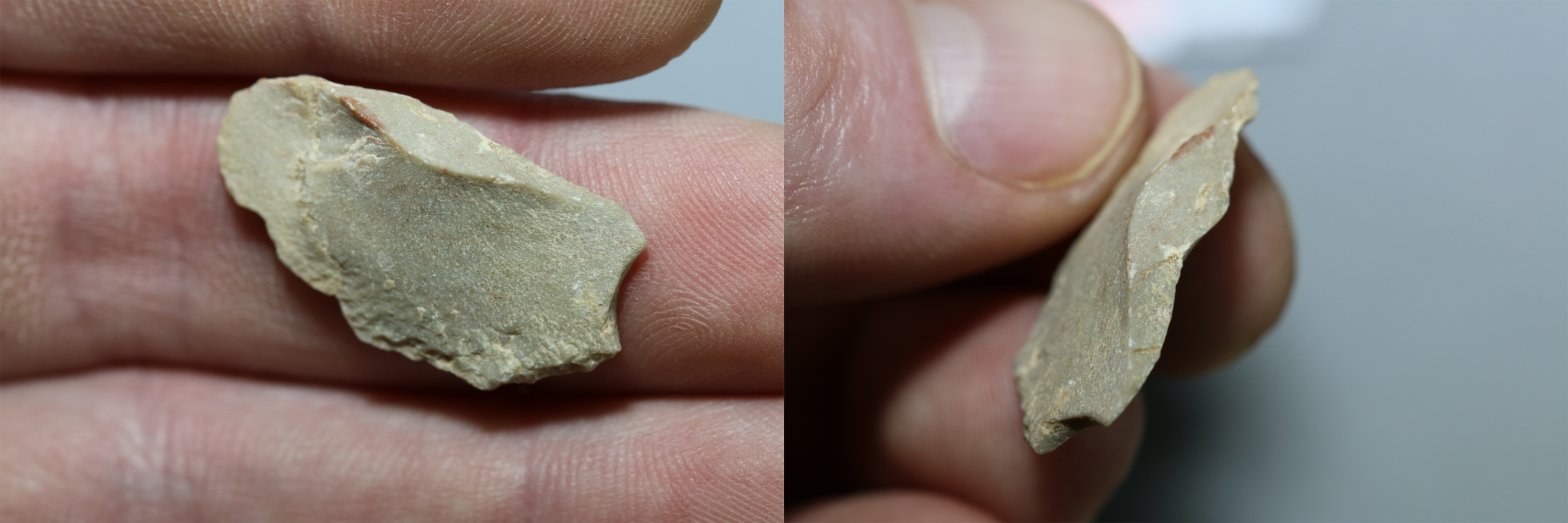Tianwen-1, a spacecraft carrying an orbiter, lander, and rover, will reach Mars in February 2021 alongside Mars missions from NASA and the United Arab Emirates.
By Becky Ferreira
July 23, 2020,

SCREENGRAB: YOUTUBE/CGTN
In this photo released by China's Xinhua News Agency, a Long March-5 rocket carrying the Tianwen-1 Mars probe lifts off from the Wenchang Space Launch Center in southern China's Hainan Province, Thursday, July 23, 2020. China launched its most ambitious Mars mission yet on Thursday in a bold attempt to join the United States in successfully landing a spacecraft on the red planet. (Cai Yang/Xinhua via AP)
China launched its first successful mission to Mars early on Thursday, a major milestone for the nation’s spaceflight program that may lead to it becoming the second nation ever to operate a rover on Mars, after the U.S.
Tianwen-1, the spacecraft that is now on its way to the red planet, is carrying an orbiter, a lander, and a rover that will reach Mars in 2021. The spacecraft’s name means “questions to heaven,” a phrase lifted from a poem by Qu Yuan, a renowned writer and politician who lived during China’s Warring States period some 2,300 years ago.
China previously attempted to send an orbiter to Mars in 2011 as part of an interplanetary ride-share with a Russian mission to a Martian moon. Unfortunately, the launch failed and left the spacecraft marooned in orbit for several months until it fell back to Earth and burned up in the atmosphere. To that point, landing an operational rover on Mars is so challenging that the United States remains the only country that has ever pulled it off.
Tianwen-1 blasted off at 12:41 PM local time (12:41 AM EST) on a Long March 5 rocket from the Wenchang Spacecraft Launch Site on Hainan Island. The spacecraft will now spend seven months traveling to Mars and is expected to insert itself into orbit around the planet in February next year.
Two or three months after its arrival in orbit, the lander and rover will detach, as one unit, and attempt to touch down on the Martian surface. The landing site has not been announced yet.
The Tianwen-1 rover weighs about 530 pounds, which is twice as large as the two “Yutu” rovers that China has successfully landed on the Moon. The mobile robot has six instruments onboard: two cameras, a radar sensor, a weather monitor, and detectors designed to study Mars’ surface composition and magnetic field.
The orbiter will relay the rover’s messages back to Earth and also carry instruments to study Mars from its perspective above the planet’s skies.
“The main task of Tianwen-1 is to perform a global and extensive survey of the entire planet using the orbiter, and to send the rover to surface locations of scientific interests to conduct detailed investigations with high accuracy and resolution,” according to a recent paper in Nature Astronomy led by the late Weixing Wan, the chief scientist of China's Mars exploration program, who sadly died in May just a few months short of the launch.
“Tianwen-1 is going to orbit, land and release a rover all on the very first try, and coordinate observations with an orbiter,” Wan’s team said. “No planetary missions have ever been implemented in this way. If successful, it would signify a major technical breakthrough.”
While the success of Tianwen-1 would be a singular accomplishment for China, the mission and its various components will have lots of company on Mars. On Sunday, the United Arab Emirates launched its first Martian orbiter, named Hope, and NASA is expected to launch its own next-generation rover, Perseverance, next Thursday.
The missions are all launching within a few weeks to take advantage of an alignment between Earth and Mars that occurs every 26 months and is ideal for interplanetary trips. ExoMars, a European-Russian mission that includes both a rover and a lander, was originally supposed to launch in this window as well, but that mission has been pushed back to 2022 due to coronavirus-related delays and because its parachutes require more tests.
In addition to all of these new arrivals, Mars is still home to two operational surface probes from NASA: the InSight lander and the Curiosity rover. Hopefully, both of those Martian explorers will still be hard at work by the time the new trio of spacecraft arrive at Mars in February. Curiosity and Perseverance are beneficiaries of NASA’s decades of success with Mars rovers, and they are both about four times as massive as the Tianwen-1 rover.
“The international planetary science community looks forward to these exciting missions,” said Wan and his colleagues in the recent paper, adding that they “will certainly advance our knowledge of Mars to an unprecedented level.”
China launches ambitious attempt to land rover on Mars
By SAMUEL McNEIL and ANIRUDDHA GHOSAL2 hours ago



3 of 9In this photo released by China's Xinhua News Agency, a Long March-5 rocket carrying the Tianwen-1 Mars probe lifts off from the Wenchang Space Launch Center in southern China's Hainan Province, Thursday, July 23, 2020. China launched its most ambitious Mars mission yet on Thursday in a bold attempt to join the United States in successfully landing a spacecraft on the red planet. (Cai Yang/Xinhua via AP)
BEIJING (AP) — China launched its most ambitious Mars mission yet on Thursday in a bold attempt to join the United States in successfully landing a spacecraft on the red planet.
Engines blazing orange, a Long March-5 carrier rocket took off under clear skies around 12:40 p.m. from Hainan Island, south of China’s mainland. Hundreds of space enthusiasts cried out excitedly on a beach across the bay from the launch site.
“This is a kind of hope, a kind of strength,” said Li Dapeng, co-founder of the China branch of the Mars Society, an international enthusiast group. He wore a Mars Society T shirt, and was there with his wife, 11-year-old son and 2,000 others on the beach to watch the launch.
Launch commander Zhang Xueyu announced to cheers in the control room that the rocket was flying normally about 45 minutes later. “The Mars rover has accurately entered the scheduled orbit,” he said in brief remarks shown live on state broadcaster CCTV.
China’s space agency said that the rocket carried the probe for 36 minutes before successfully placing it on the looping path that will take it beyond Earth’s orbit and eventually into Mars’ more distant orbit around the sun.
Liu Tongjie, spokesman for the mission, said in a press briefing that the launch was a “key step of China marching towards farther deep space.” He said that China’s aim wasn’t to compete with other countries, but to peacefully explore the universe.
It marked the second flight to Mars this week, after a United Arab Emirates orbiter blasted off on a rocket from Japan on Monday. And the U.S. is aiming to launch Perseverance, its most sophisticated Mars rover ever, from Cape Canaveral, Florida, next week.
“It’s amazing that another nation has launched the case for Mars,” said Dr. Katarina Miljkovic, a planetary scientist at Curtin University in Australia, adding that the world was no longer in a space race. “It’s more like this marathon of space that we all want to be running.”
China’s tandem spacecraft — with both an orbiter and a rover — will take seven months to reach Mars, like the others. If all goes well, Tianwen-1, or “quest for heavenly truth,” will look for underground water, if it’s present, as well as evidence of possible ancient life.

A security guard is silhouetted near a display depicting rovers on Mars during an exhibition in Beijing on Thursday, July 23, 2020. China launched its most ambitious Mars mission yet on Thursday in a bold attempt to join the United States in successfully landing a spacecraft on the red planet. The Tianwen-1 was launched on a Long March-5 carrier rocket from a launch site on Hainan Island. (AP Photo/Ng Han Guan)

A security guard adjusts his mask near an exhibition of rovers and bio-domes on Mars in Beijing Thursday, July 23, 2020. China launched its most ambitious Mars mission yet on Thursday in a bold attempt to join the United States in successfully landing a spacecraft on the red planet. The Tianwen-1 was launched on a Long March-5 carrier rocket from a launch site on Hainan Island. (AP Photo/Ng Han Guan)

Security guards watch over an exhibition depicting rovers and bio-domes on Mars in Beijing Thursday, July 23, 2020. China launched its most ambitious Mars mission yet on Thursday in a bold attempt to join the United States in successfully landing a spacecraft on the red planet. The Tianwen-1 was launched on a Long March-5 carrier rocket from a launch site on Hainan Island. (AP Photo/Ng Han Guan)

A woman and child wearing masks to curb the spread of the coronavirus look at a model depicting a rover on Mars during an exhibition in Beijing Thursday, July 23, 2020. China launched its most ambitious Mars mission yet on Thursday in a bold attempt to join the United States in successfully landing a spacecraft on the red planet. The Tianwen-1 was launched on a Long March-5 carrier rocket from a launch site on Hainan Island. (AP Photo/Ng Han Guan)
This isn’t China’s first attempt at Mars. In 2011, a Chinese orbiter accompanying a Russian mission was lost when the spacecraft failed to get out of Earth’s orbit after launching from Kazakhstan, eventually burning up in the atmosphere.
This time, China is going at it alone. It also is fast-tracking, launching an orbiter and rover on the same mission instead of stringing them out.
China’s secretive space program has developed rapidly in recent decades. Yang Liwei became the first Chinese astronaut in 2003, and last year, Chang’e-4 became the first spacecraft from any country to land on the far side of the moon.
Conquering Mars would put China in an elite club.
“There is a whole lot of prestige riding on this,” said Dean Cheng, an expert on Chinese aerospace programs at the Heritage Foundation in Washington.
The launch was “gutsy,” said Dr. Jonathan McDowell, an astronomer at the Harvard-Smithsonian Center for Astrophysics. The next challenge is for the probe to be “still working when it gets to Mars and survives entry and landing.”
Landing on Mars is notoriously difficult. Only the U.S. has successfully landed a spacecraft on Martian soil, doing it eight times since 1976. NASA’s InSight and Curiosity rovers still operate today. Six other spacecraft are exploring Mars from orbit: three American, two European and one from India.
Unlike the two other Mars missions launching this month, China has tightly controlled information about the program — even withholding any name for its rover. National security concerns led the U.S. to curb cooperation between NASA and China’s space program.
In an article published earlier this month in Nature Astronomy, mission chief engineer Wan Weixing said Tianwen-1 would slip into orbit around Mars in February and look for a landing site on Utopia Planitia — a plain where NASA has detected possible evidence of underground ice. Wan died in May from cancer.
ADVERTISEMENT
The landing would then be attempted in April or May, according to the article. If all goes well, the 240-kilogram (530-pound) golf cart-sized, solar-powered rover is expected to operate for about three months, and the orbiter for two years.
There is uncertainty even after the rover lands on Mars, said Liu Tongjie. “For instance, if there is a sand storm, it needs to modify its mode of work to prevent sands falling on solar panel, which will affect its ability to get energy,” he said.
Though small compared to America’s hulking, car-sized 1,025-kilogram (2,260-pound) Perseverance, it’s almost twice as big as the two rovers China has sent to the moon in 2013 and 2019. Perseverance is expected to operate for at least two years.
This Mars-launching season — which occurs every 26 months when Earth and Mars are at their closest — is especially busy.
The UAE spacecraft Amal, or Hope, which will orbit Mars but not land, is the Arab world’s first interplanetary mission. NASA’s Perseverance rover is up next.
“At no other time in our history have we seen anything like what is unfolding with these three unique missions to Mars. Each of them is a science and engineering marvel,” the Space Foundation’s chief executive officer Thomas Zelibor said in an online panel discussion earlier this week.
China’s road to Mars hit a few bumps: A Long March-5 rocket, nicknamed “Fat 5” because of its bulky shape, failed to launch earlier this year. The coronavirus pandemic forced scientists to work from home. In March, when instruments needed to be transported from Beijing to Shanghai, three team members drove 12 hours to deliver them.
While China is joining the U.S., Russia and Europe in creating a satellite-based global navigation system, experts say it isn’t trying to overtake the U.S. lead in space exploration.
Instead, Cheng of the Heritage Foundation said China is in a “slow race” with Japan and India to establish itself as Asia’s space power.
___
Ghosal reported from New Delhi. Follow him and McNeil on Twitter: @aniruddhg1 and @stmcneil. Associated Press researcher Chen Si in Shanghai and researcher Yu Bing and producer Olivia Zhang in Beijing contributed to this report.
___
The Associated Press Health and Science Department receives support from the Howard Hughes Medical Institute’s Department of Science Education. The AP is solely responsible for all content.





















